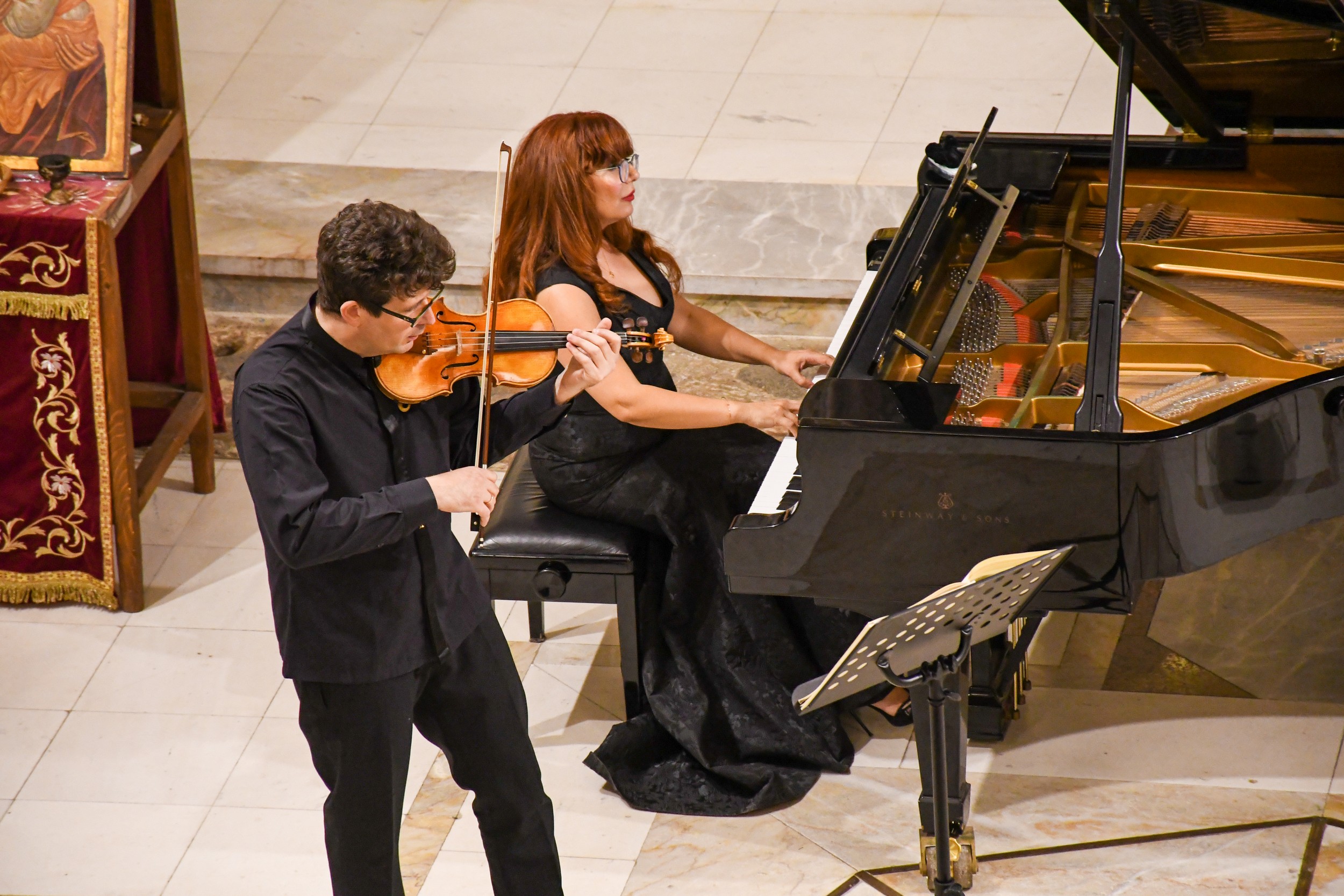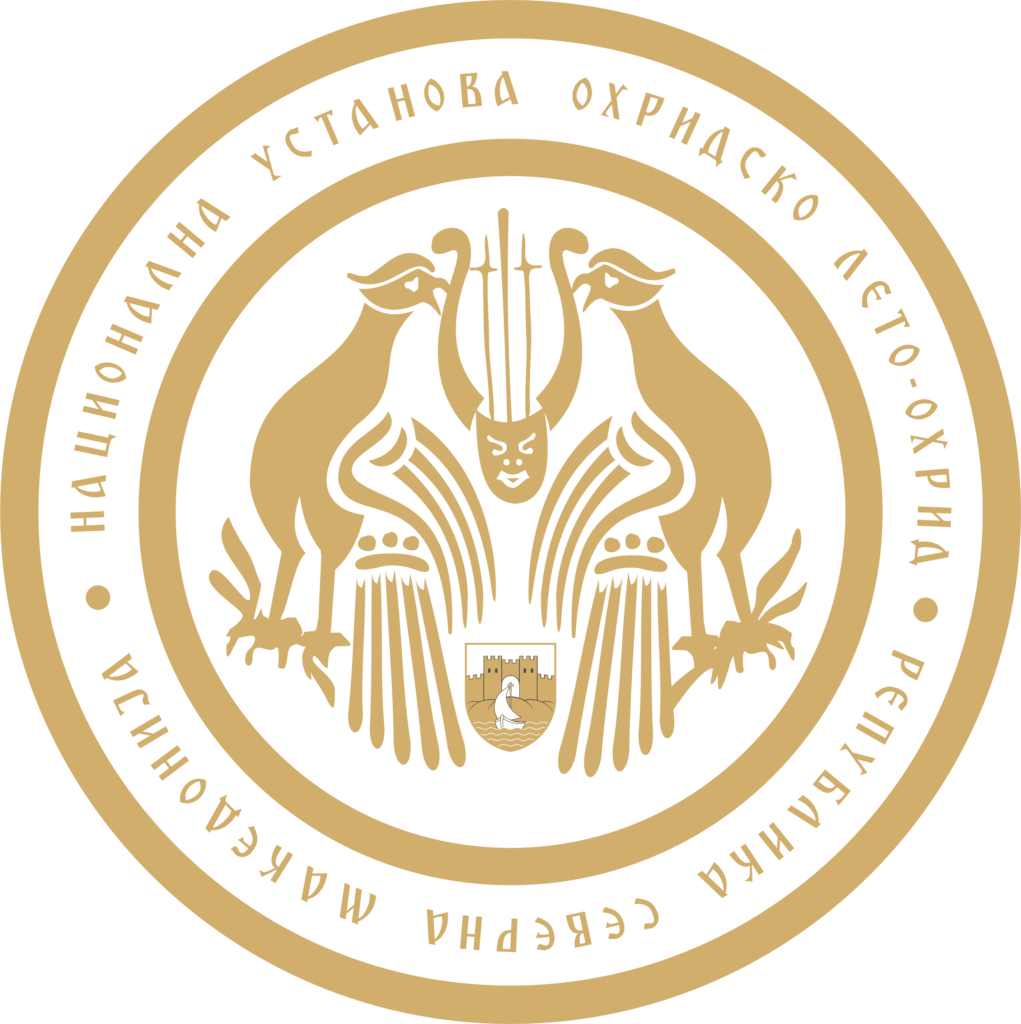
It is totally pointless to assess the technical elements of the concert of the violinist Ermir Abeshi and Merita Rexha Tershana at Ohrid Summer Festival this year.
The Albanian artists, already known to the Ohrid audience, have reached the artistic level when the performance is moved to some higher spheres towards clear creation of the artistic act. It is about two superior artists with already built and highly established music careers in all spheres of concert action: solo, chamber and orchestra. Their rich experience on stage, as well as the unavoidable detailed preparation, are simply recognized in every in inspirationally played phrase in both eminent artists. It is enough to mention that the violinist Ermir Abeshi in 2012 was a Finalist at one of the oldest and most prestigious competitions of classical music, the Queen Elisabeth competition, which has existed since 1937 in Belgium, whereas the pianist Merita Rexha Tershana has performed as a piano collaborator with all Albanian most renowned artists. Besides that, both possess rich concert careers worldwide.
For this occasion, at the 62nd Ohrid Summer Festival, the artists decided on a rich sonata evening. The repertoire included two powerful sonatas, the Mozart’s K.304 in E minor, the Brahms’ Third Sonata from op.108 in D minor and the grandiose “Kreutzer” sonata by Beethoven. A glance towards such a rich repertoire could lead us to an expectation of a rational rather that emotional artistic approach. However, the first played tones in the unison beginning of the Mozart’s “Allegro” make it clear that in front of the audience there are two outstandingly imaginative and passionate artists. Their interpretation is very warm and naturally reaches to the audience.
The two-part Sonata for violin and piano, made when Mozart was only 22 years old, contains depth and dramatic expressiveness, and by sensibility it irresistibly reminds the piano sonata in A minor K.310. That is no wonder knowing that both compositions are made in the same period during his stay in Paris, just after the loss of his mother. This strongly emotional piece was a perfect introduction to the art evening. Mozart’s lyrical elements with harmonisations introducing the romantic world of Beethoven, Ermir Abeshi and Merita Tershana at the concert in St Sophia showed in an especially elegant manner, characteristic for the most musically talented artists. The themes in the “Allegro” and the “Minuet”, ingeniously simple, were played by the artists with a crystal clear precision and expressiveness, so much essential for Mozart’s language and style.
In continuation, the third Sonata by Johannes Brahms from op.108 in D minor reminded us to mention the Hanslick’s point of view, perceiving Brahms’ work as “absolute” music, unburdened with any kind of external non-musical ingredients. Besides seen from a contemporary aspect, this tendency sounds old-fashioned, listening to this Sonata in D minor, we will agree that it fully corresponds to the purity and ideal in shape and expression the great composer creates. Four high-level parts with different points of gravity – in the first and the second on the violin, the third with piano dominance, whereas the fourth with a tarantella temper contains power of bravura interwoven in both instruments and leading to a dramatic epilogue of the piece. Abeshi and Tershana’s performance of this extraordinary work, named ‘beautiful music’ by the artists in a relaxed conversation during the break in the magical yard of St Sophia, took out all the hidden layers interwoven in the dense facture of the parts: the complexity of the sonata part, the scherzo in the third and a virtuosity full of sharp dynamic contrasts. However, the artists performed the second part, the irresistible Adagio, with visible enjoyment to the pleasure of the audience and at the end, as an encore. The violinist Ermir Abeshi, in his interpretation of the Brahms’ sonata, showed that he possesses an explorer’s mind who is not afraid and bravely heads to all challenges hidden in the majestic composition and exaggerates its philosophic dimension. He sensibly plays a soft and controlled vibrato, gives deep coloristic sensations, but also mastery of bravura. The pianist Merita Tershana accompanies his sensibility closely, and shapes the piano part with much taste and a richly hued tone.
As a crown to the evening, one of the most grandiose sonatas ever written for violin and piano. This, by many things massive piece, unites a challenging sonata part with inventive tempo combinations (Adagio – Presto – Adagio), complex variations and gallop – finale in presto. The powerful composition fully reflects the whole creative potential and Beethoven’s strong energy. Those are emotional storms expressed in sudden dynamic contrasts, tempo alterations, rich articulation, so, it is not accidently that this work was the inspiration for the novel “Kreutzer Sonata” by Leo Tolstoy, a story of love, jealousy and hatred. The interpretation of the Kreutzer sonata was given sovereignly, stylistically coherently, dynamically inventively and excitedly by the duo. They showed emotional refinement, but also strong decisiveness in the fortissimo parts. Both artists leave the impression like strong creative individuals merged in a harmonious coherence. In whole, we attended a powerful concert, worthy for the level of our Festival.
“Thank you for the music” – were the words after the concert of the Albanian musician Ermir Abashi and Merita Rexha Tershana at Ohrid Summer Festival, probably the most emotional reward an audience can give the performers. A sign that the artistic mission has been accomplished.
Following the line of all concert evenings, it is inevitable to conclude that musicians perform under the arches of St Sophia with unhidden pleasure and they possess a special piety towards the Festival.
Vikica Kostoska Peneva

